In 2021, Dave Morley explained the work of Fuel VFX on Mission Impossible: Ghost Protocol. He then worked on various films such as Unbroken, Thor: Ragnarok, Jurassic World: Fallen Kingdom and Ford v Ferrari.
How did you get involved on this show?
Via Netflix and the VFX producer.
How was the collaboration with Director Ben Falcone?
It was really great. Ben is a very trusting collaborative director. He likes to surround himself with people he can trust and feels have the films best interest at heart. He would always want to hear ideas and was always open to suggestions to push the story forward
What was his approach and expectations about the visual effects?
Keep it simple. Telling the story and making a joke hit was the most important aspect
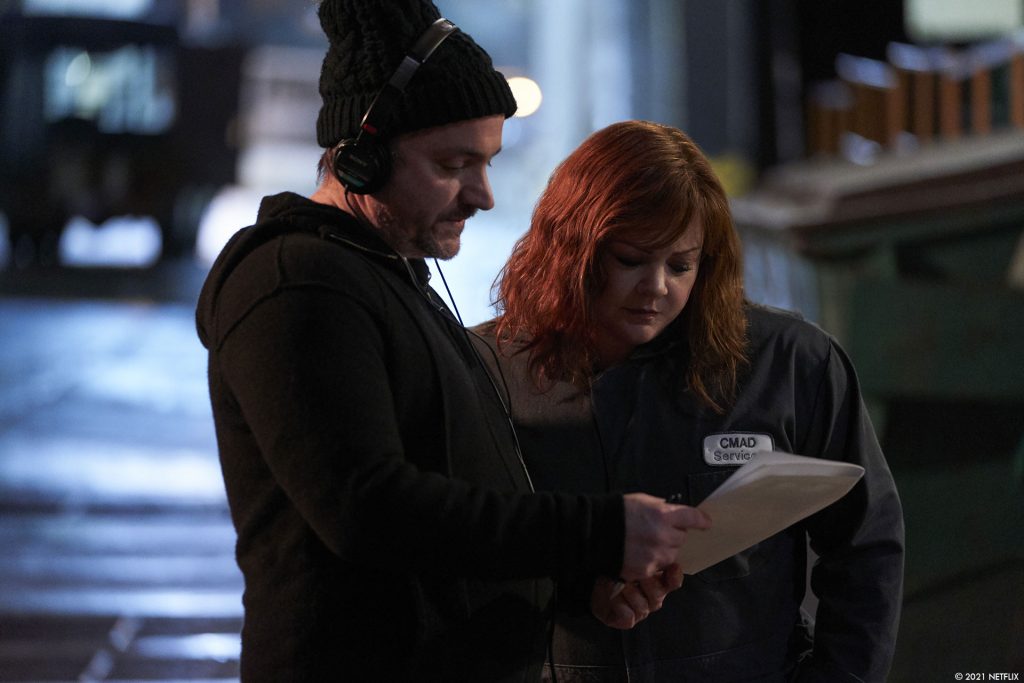
How did you organize the work with your VFX Producer?
Scott Pucket was the VFX Producer. He was bought in earlier than I was, he did the initial bids and discussions with Ben. They had a great dialog going from the get go. When I came on, it was more into the logistics of how to shoot and what we would need. We quickly dug into a previz process and discussed with the various departments how to get the best bang for buck on the screen. It was great working with Scott, he gets very involved and I always felt very supported by him along the way.
The movie is full of superheroes and supervillains. What kind of references and influences did you receive for their powers?
We only really discussed ideas with Ben. Based on the actions Laser’s character needed to do we came up with the idea of her power being energy based, something that she could harness and manipulate at will. For Emily and her invisibility we had to solve the issue of how to make a character invisible but actually still allow the audience to see her. This was probably the most challenging. Our initial tests were as simple as a mix back to a clean plate, but it quickly just felt cheap. In the end we came up with a CG solution that meant we had to fully matchmove a digital double and then produce some CG renders that gave refraction/reflection and a iridescence that was controlled in comp to achieve the final look.The other characters were more based on physical traits, be it super strength or speed. These were easily achieved through simple comp tricks.
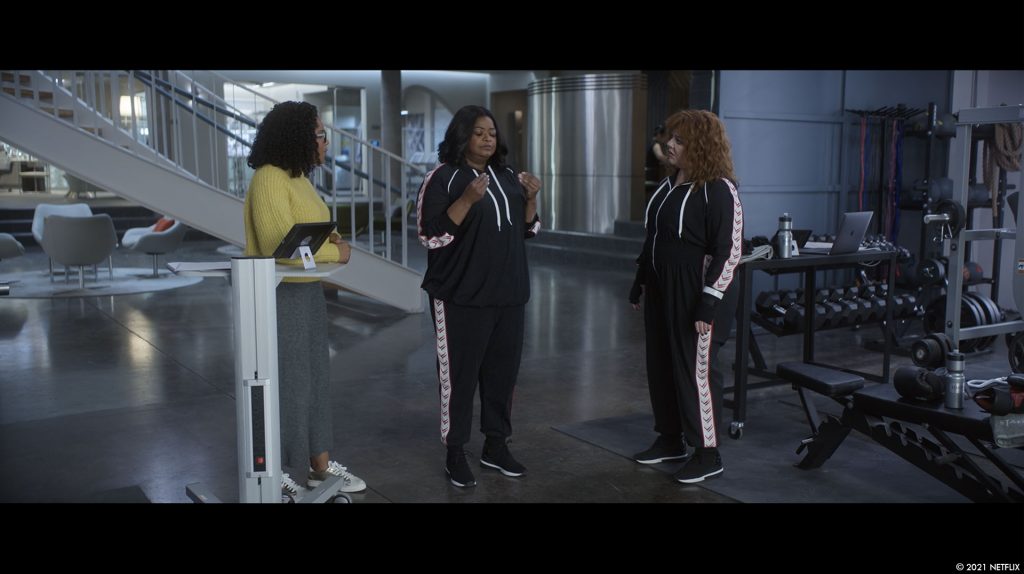
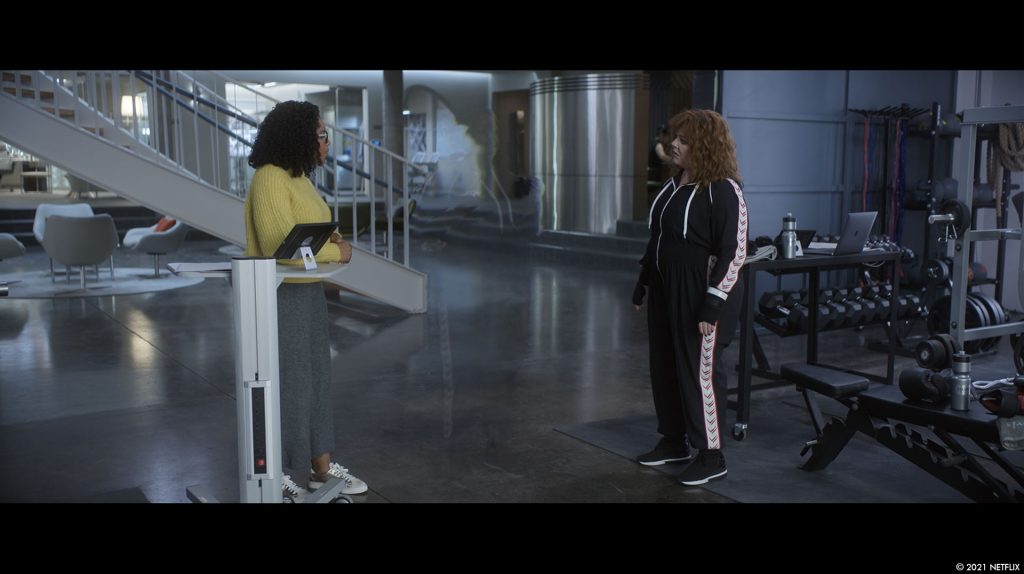
Can you explain in detail the creation and animations of the laser beams of Laser?
As her energy was energy based, we came up with the idea that she created a black hole that sucked in the energy and particles from around the environment she was in. the black hole then collapses that releases this energy flow. She had the ability to control how weak or strong it was depending on what “damage” she wanted to inflict. On the lower end side she could use the energy beam as a lasso to grab and throw people to the upper side where she would be able to cause amaze physical destruction to the world around her. We used primarily Houdini for all these effects. Mainly particle systems but it also involved geometry based elements to create the lightning bolts. Secondary spawns of energy spanned out into the world releasing sparks and burns into areas. For the harness we rigged the beams around the characters and with the match moves we animated and art directed exactly where we wanted the beam to sit.
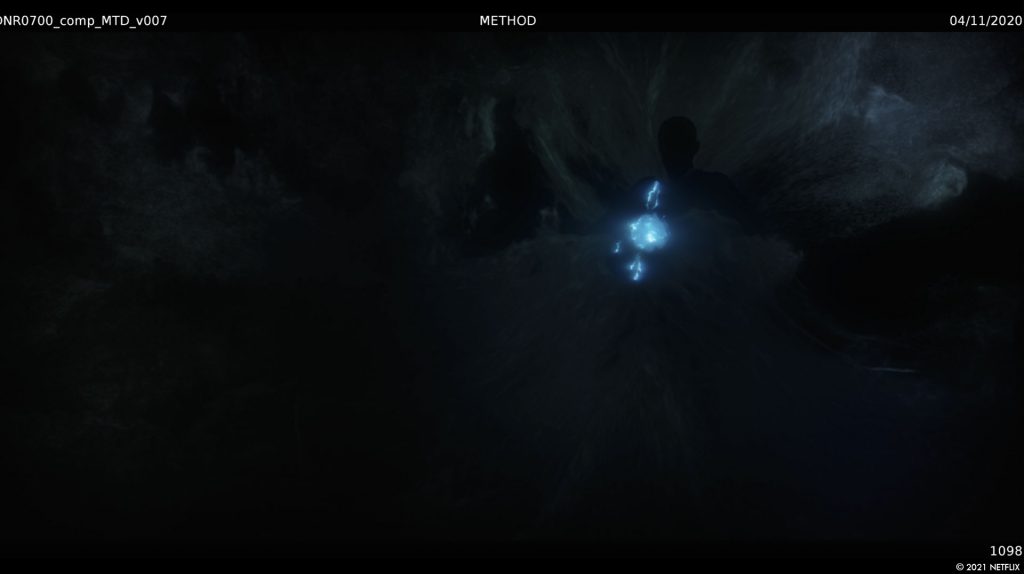
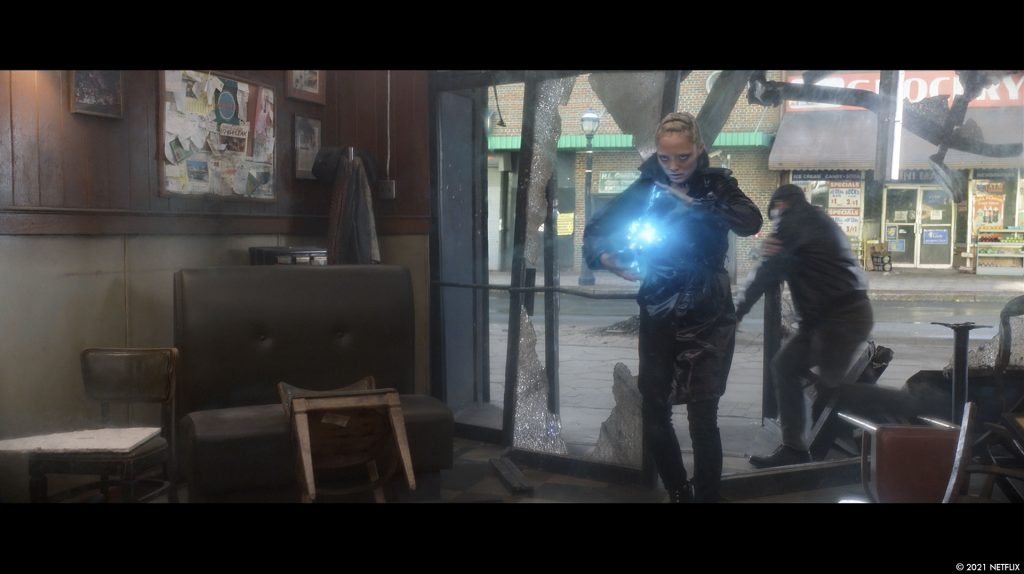
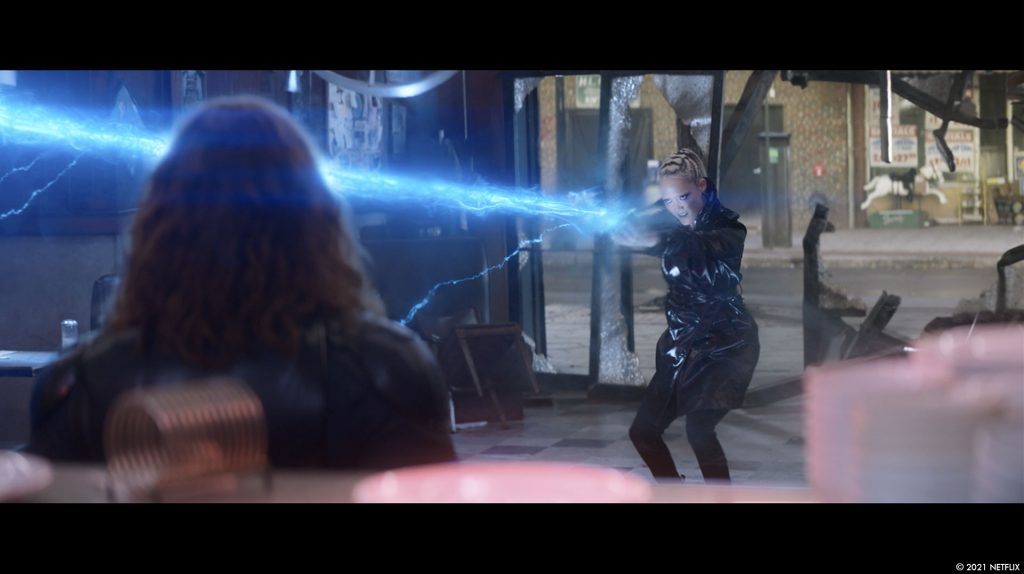
Laser can create massive explosions. Can you tell us more about the FX work?
We always ground any explosion with practical effects. The explosion that took place outside the cafe was 80% in camera, we added her beam and a sense of static electricity expanding with the explosion as well as tieing her signature blue color into the explosions. The door blast inside the training room was a different story. As we were on stage it was harder for us to use much practical effects so we had to create that one entirely. This was more complicated due to the door being so thick and made of steel. With that in mind we came up with the idea that it super heated and melted a blast region. This allowed for some fun CG molten metal and fire.
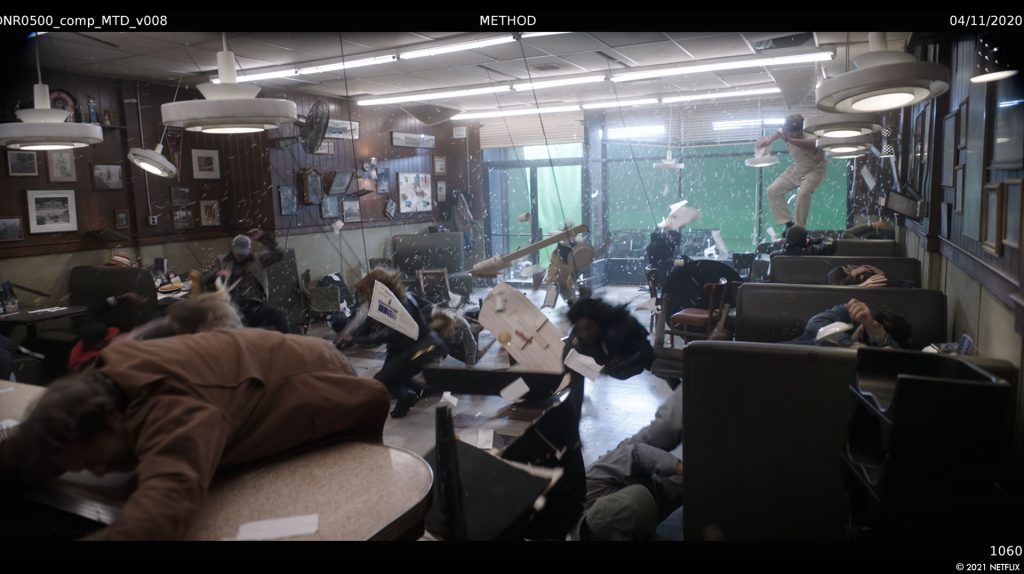
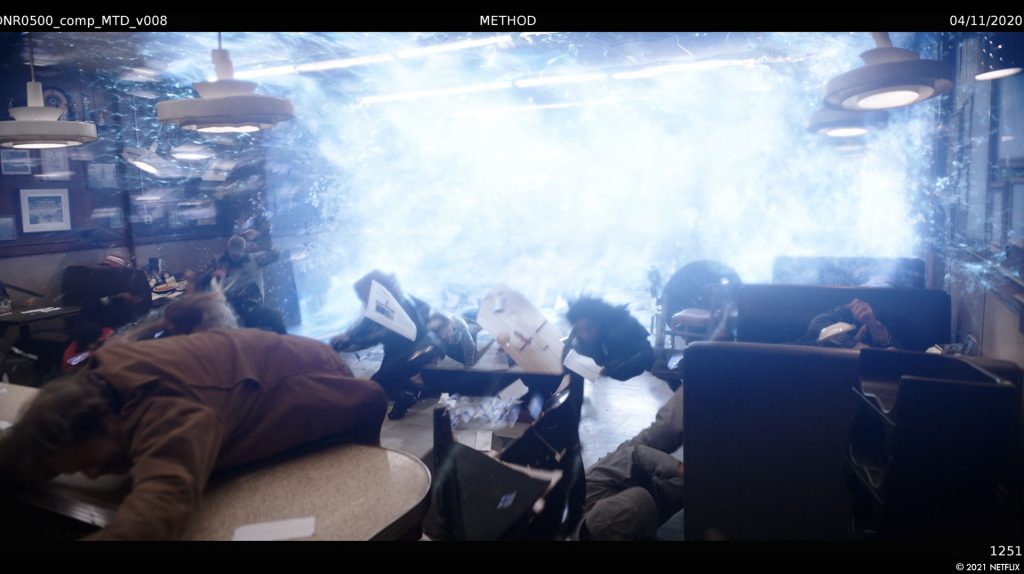
How did you work with the SFX and stunts teams?
The complexity of the stunt work was mostly in the final battle sequence. We had to work with the team to figure out how we were going to make Emily appear and disappear whilst she was fighting the goons. The stunt team did a full fight viz for the sequence and cut it together to help visualize how it might look. When we shot the sequence we had to shoot multiple free camera passes with Emily there and without her there, sometimes with just a clean plate so we could paint her out or transition her out of a shot as she disappeared or even at times re-appeared during a shot. The disappear and reappear moments all involve extensive matchmoves and CG renders to refract the world. Sometimes even adding additional flying debris to make the illusion of her disappearing make more sense.
Stunts were also heavily involved in sequences where Lydia was thrown and kicked around the room. Mellisa is great with stunt work and she does as much as safely possible (including the throat throw shot) When it was deemed just too dangerous the stunt double was used for the bigger moments or when interaction of the world was needed, like the moment of the throat thrown through the cubicle, or being through through the window of the board room. In these shots we shot with no glass leaving all the frames in place and letting the stunt person break through it all. All in all the stunt team always did a pass at the all big set pieces giving us a great base to work on, sometimes face replacements were used or we’d do the classic “texas switch” to achieve the shot.
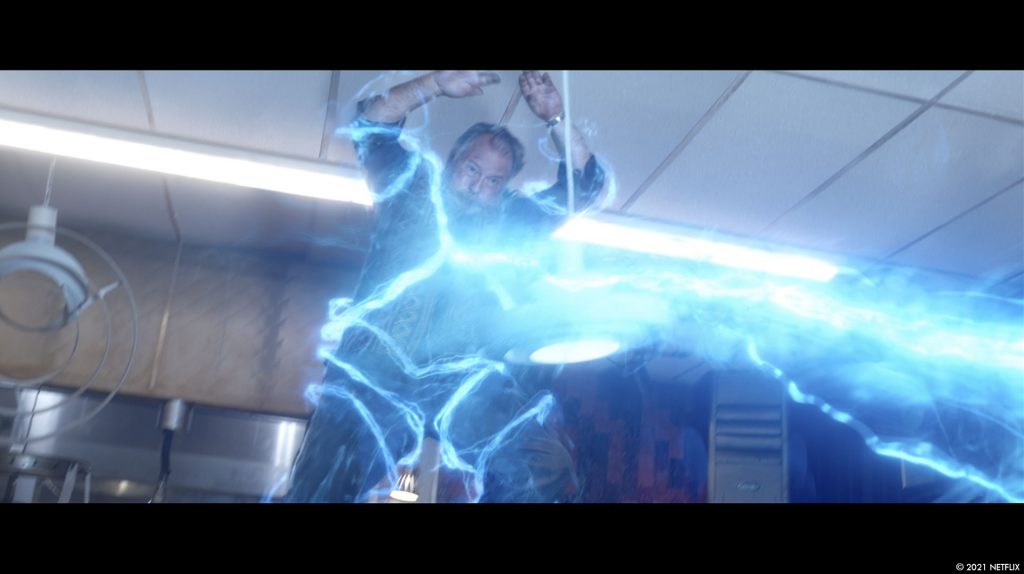
Which stunt was the most complicated to enhance and why?
It was either the throat throw as we had a combination of Mellisa being thrown, the stunt person being thrown and CG digi takeover. We used Melissa for the close moment seeing her face and throat being grabbed, she was on wires and was thrown, but only as far as the cubicle. The stunt person then re-did that action, but was then lifted and thrown about 12 foot going through the cubicle breaking it. We then used the Melissa plate as the master comped in the stunt plate (after removing the stunt actor) removed Melissa at a point that we digitally took over and flew the CG digi through the glass wall into the office, which was fully CG with flying stables, paper, monitors, keyboard etc, into the CG venetian blinds that interact as she’s whits the back wall.
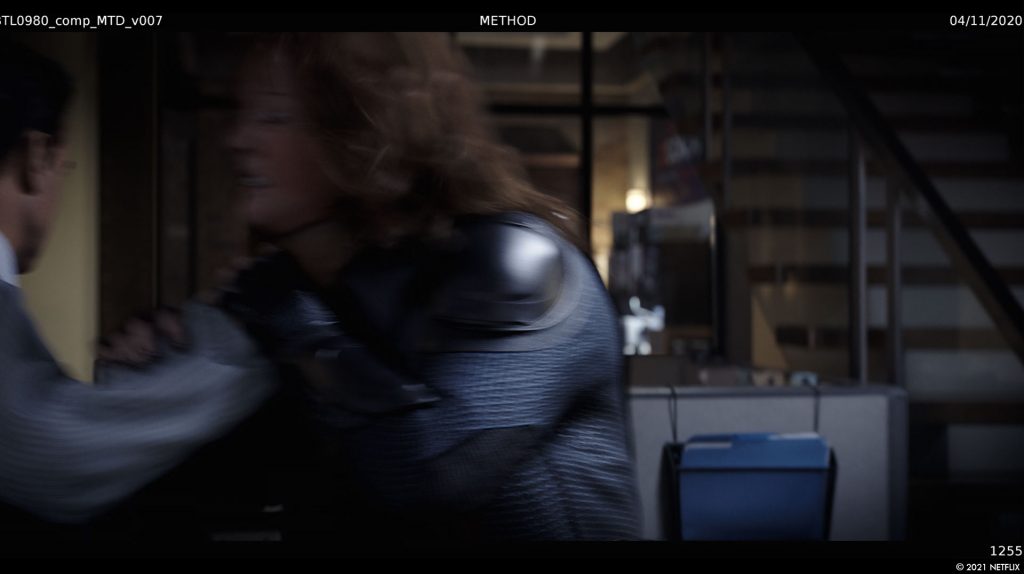
The other shot that was super complicated was the loading dock door blast. The was a combination of Melissa and Octavia doing a pass, then re-doing it with with stunt team with some interactive flames and debris. We then combined the 2. The stunt player was used for the A-side with a face replace to where the roll happens on the ground and we morph transitioned to Melissa on the other side (the texas switch) we then added a CG door and explosion from laser with fire and debris on top.
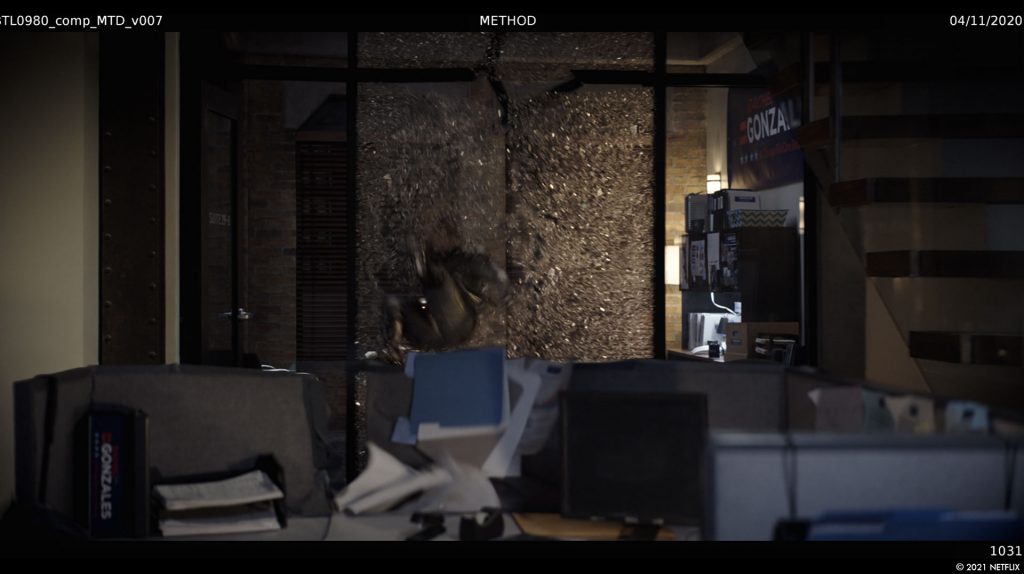
How did you create the digital doubles?
We had the scanned in a photo booth with hundreds of cameras simultaneously firing. Was a great process as it is mobile and they drove to set for a few days to cover all our scanning needs. We were able to capture multiple costumes and facial poses to allow for some simple face rigs. They shoot cross polarized so building them from the scan is relatively easy.
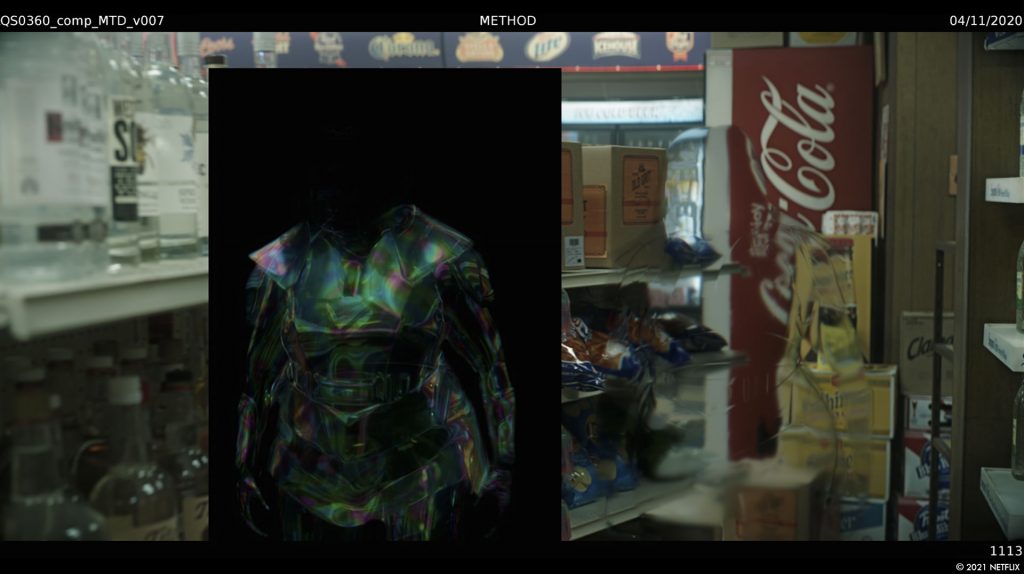
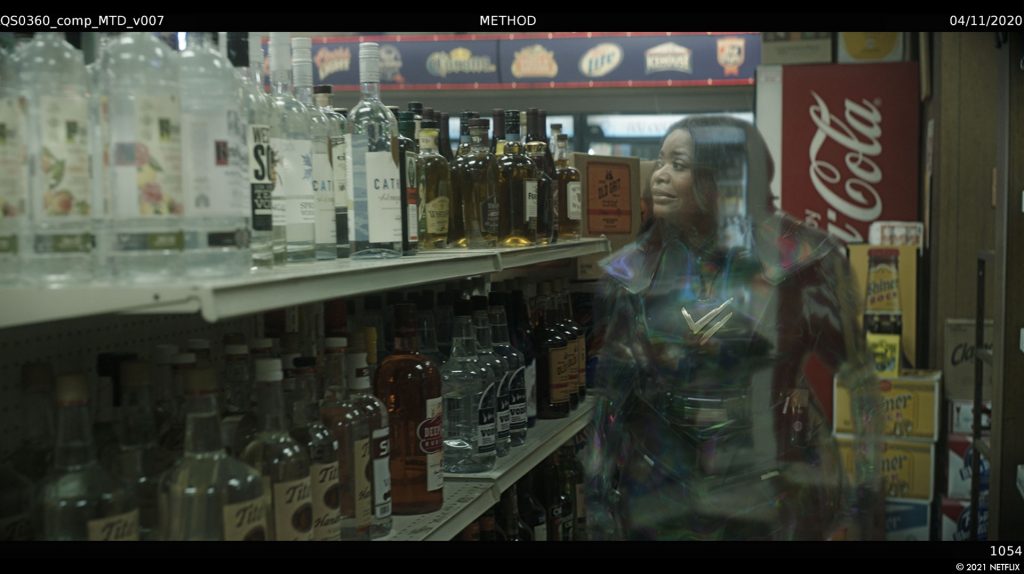
Can you explain in detail the bus sequence?
We always knew we needed to have Lydia throw the bus. For me it was going to be important to have something that she could be holding for both physical positioning of hands as well as creating a shadow that simulated a bus above her head. Knowing this we got the art department to build the underside of a bus that was hung above her from a crane that would be something light enough she could move with her own body strength. We then digitally extended this section and added more detail to the practical piece that she was holding onto. For the actual throw she wasn’t holding onto anything just mimicking the throw, for this shot we digitally replaced her arms to get a better contact point, with some fans of screen to create the vortex of wind as the bus flies away. We also digitally replace the trees to sell the feeling of wind pushing in the air as the bus flys.
Can you elaborate on the big final explosion in the Chicago River?
Another tricky sequence to plan for. As the battle sequence was shot on stage in Atlanta, we predetermined which building we were using as the location in Chicago. from that the art department built a small section of the exterior to match the Chicago building exterior and of course the interior was built to mimic what was the layout inside. For the majority of the sequence we used a translite for the distant Chicago city. When we moved into the end of the sequence inside the mayor’s office we moved to a green screen as we knew we had to move to the outside of the building using plates we shot as a second unit in Chicago. In Chicago we had a plate day where we shot exteriors of the building and Lidar scanned the world for us to add our CG explosion. The Explosion moment we replaced the full river with a CG water base and then simulated the explosion using reference to large scale underwater explosions.
The movie is full of graphics elements. Can you elaborate on this aspect?
All this work was done with Territory Studio. They did an amazing job putting them all together. A lot of small stories to tell within the graphics which they nailed
Which sequence or shot was the most challenging?
The battle sequence was the most challenging. It had everything for us, from Emily invisibility, laser FX, big stunt/glass FX, The king “out the park” moment, the final bomb blast.
How did you choose the various vendors?
There was only one vendor, Method Studios. We had an in house VFX team that did some work, Territory doing the graphics
How was the collaboration with their VFX Supervisors?
Bob Snyder was the in house VFX supervisor, he was also onset with me. We had 2 units running most days so we would split our time across both. He helped with temps with eh VGFX editor and also did a whole bunch of shots himself. Internally at Method, I served as the VFX supervisor as well.

Is there something specific that gives you some really short nights?
I try to switch off everyday, but there are always shots that test your creative thinking.
What is your favorite shot or sequence?
I love how the neck shot turned out. very seamless. I would also say that the opening shot in Chicago is one that people don’t even realize is a full CG Chicago. That was a very tricky shot to tie together into the train, but it worked out really well. Super proud of that one.
What is your best memory on this show?
Working with Ben and Mellisa. Was really nice to feel the trust they had for the work. A lot of creative freedom to come up with ideas.
How long have you worked on this show?
I was on the show for close to 18 months. About 6 months of that was in pre and shooting in Atlanta. about 11 months in post back in Vancouver.
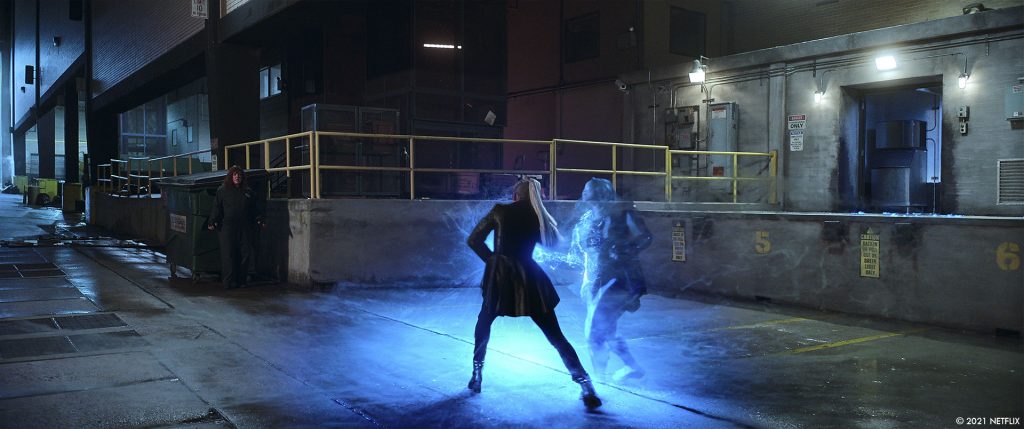
What’s the VFX shots count?
All in we had around 720 shots.
What was the size of your team?
We had approx. 100 or so people at Method
What is your next project?
I’m currently working on Ben and Melissa’s next project “God’s Favorite Idiot“
A big thanks for your time.
WANT TO KNOW MORE?
Method Studios: Dedicated page about Thunder Force on Method Studios website.
Netflix: You can now watch Thunder Force on Netflix.
© Vincent Frei – The Art of VFX – 2021




